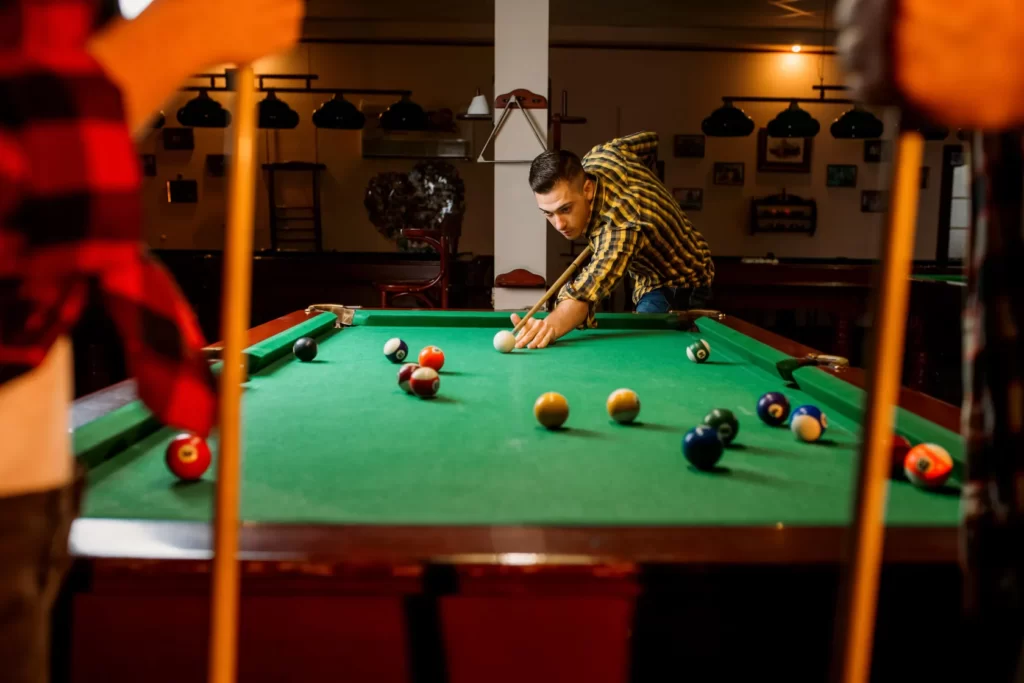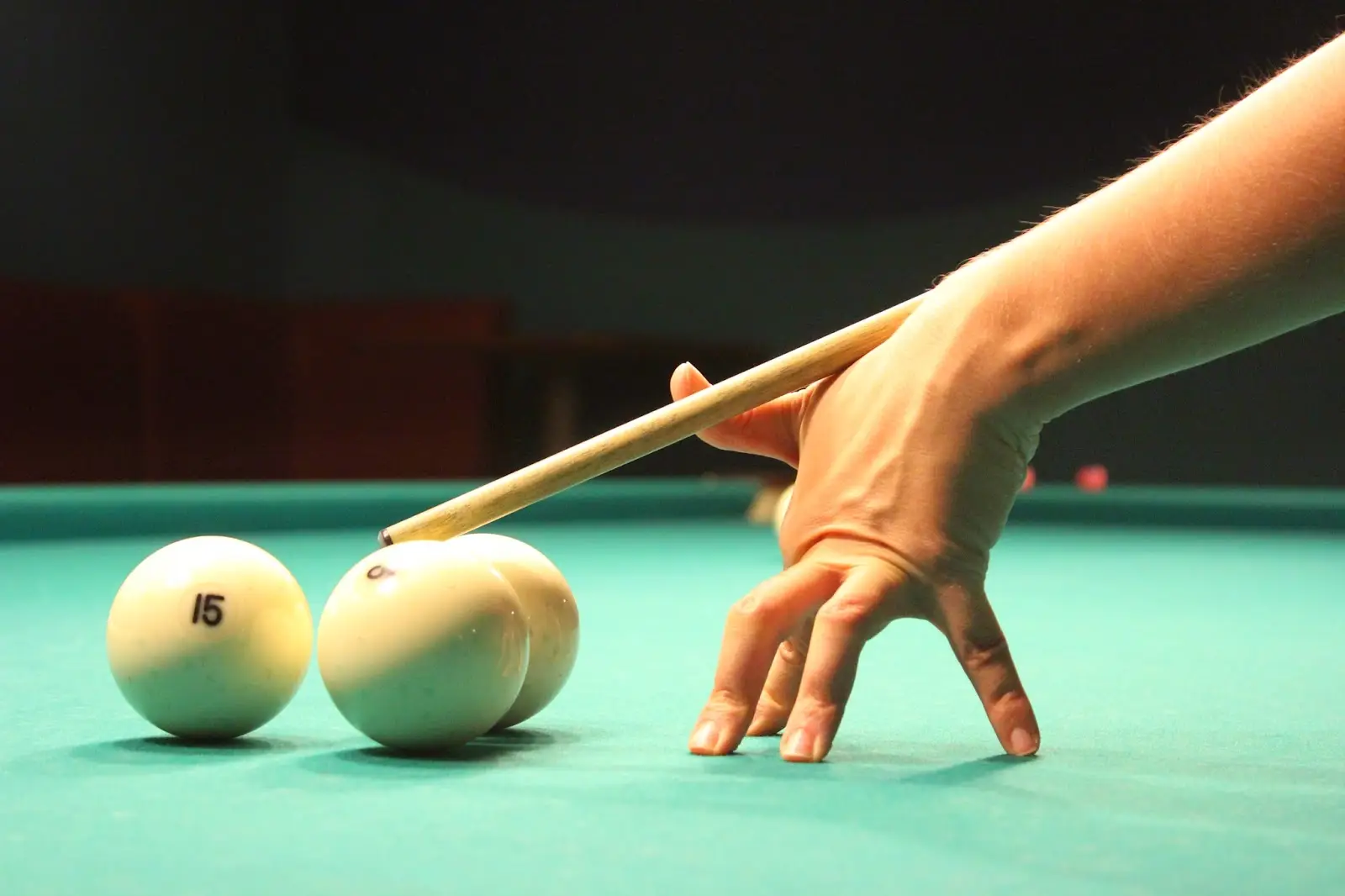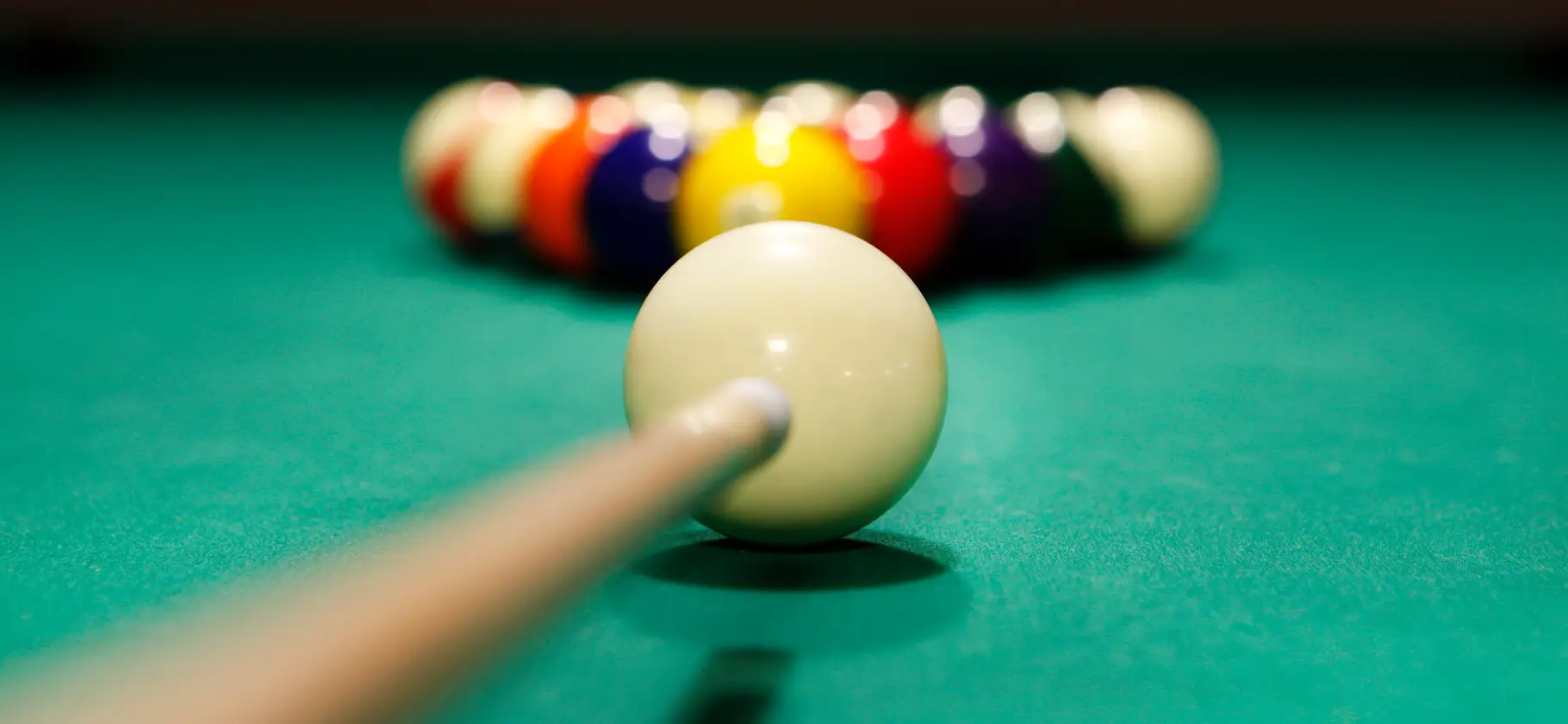American billiards is a cultural heritage that unites generations of players. It all started in the 19th century, when immigrants from Europe brought billiards traditions with them. Gradually, these traditions took root and developed into a unique style in the United States. Unlike British snooker and French carom, billiards became a symbol of mass entertainment in the United States and became an integral part of bar culture.
The story is particularly clear in the 1920s, when interest in the sport began to grow in the United States. Pool tables appeared in bars, clubs and even at home, and players increasingly participated in local tournaments, creating an atmosphere of healthy competition and fun. One of the major milestones was the introduction of standardised rules and formats, such as the 8-ball and 9-ball, which made the discipline accessible and fun for all social strata.

Spread and cultural influence
Billiards games gained popularity for their accessibility and simplicity. Unlike more rigorous and complex forms of billiards, such as snooker, pool was easy to understand and quickly became mass entertainment. American bar culture literally ‘befriended’ pool, making it an integral part of leisure. A regular pool table became the symbol of a gathering, where important matters were discussed and decisive meetings took place.
Billiards rules: what you need to know
The basic rules are easy to remember, but require precision and concentration. A standard billiard table is 2.74 m long and 1.37 m wide. There are 16 balls on the table, one of which is white (the billiard ball) and the other 15 coloured, including a black ball (8). The aim is to hit certain balls into the hole using the bat.
8-ball: the American billiards classic
The most common form of American billiards. A complete set of 15 balls is used: 7 single-coloured balls, 7 striped balls and a black ball with the number 8. At the beginning, participants break a pyramid and then everyone chooses their own group of balls, either single-coloured or striped. The goal is to get all their balls and then the black ball (8) into the designated hole. You lose if the 8 falls too early or in the wrong hole.
9-ball: speed and strategy, comparison with 8-ball
Unlike 8-ball, 9-ball uses only nine balls, numbered from 1 to 9. It is not just about accuracy. Not only accuracy is important, but also skill. Not only accuracy is important here, but also strategy, because you have to score in order: from the first to the ninth ball. The winner is the one who hits the ninth ball first, even after a series of combinations and bounces. This form of snooker is especially popular with professionals because of its dynamic pace and high level of tactical thinking.
Winning strategies
To be successful in a game of 8-ball, it is advisable to concentrate on controlling the bat and trying to position it so that the next shot is as convenient as possible. One of the key elements of strategy is the ‘safetie’, a technique in which the player deliberately leaves the bat in an awkward position for the opponent, forcing him to make a mistake. It is crucial to think about the order of the balls in advance to avoid awkward positions at the end of the game. Strategic planning and control over the bat not only help create convenient situations for yourself, but also make the opponent’s moves more difficult, greatly increasing the chances of winning.
In 9-ball, on the other hand, the ability to make quick decisions and make use of all available opportunities to make combinations is important. Often, the winner is not the one who plays every ball perfectly, but the one who is able to use unconventional moves and risky shots to take the lead. It is important to be able to calculate possible combinations and use every ball on the table as a potential chance to advance to the ninth ball. Sometimes in 9-ball, it is useful to take risks with powerful and difficult shots to ruin your opponent’s combination game or to create a winning situation for yourself.
Snooker equipment
 To play, you need the right equipment. The basics are a billiard table, balls, cue and various accessories. A billiard table is usually 9 feet in size, although you can also find 7- and 8-foot tables, which are used for amateur games and confined spaces.
To play, you need the right equipment. The basics are a billiard table, balls, cue and various accessories. A billiard table is usually 9 feet in size, although you can also find 7- and 8-foot tables, which are used for amateur games and confined spaces.
Balls and cue
Billiard balls have a diameter of 57.15 mm and weigh about 170 grams. They are made of durable phenolic plastic for durability and abrasion resistance. Cues, on the other hand, are made of hardwood such as maple and are about 1.47 metres long. The top of the cue (the sticker) is usually covered with leather, which provides better stroke control and bit handling.
Lukavik and accessories
The Lukavik, or ‘bridge’, is used when a cue needs to be hit at a long distance. This tool helps to stabilise the cue and guide the shot accurately. Players also use chalk to work the cue to increase the friction between the cue and the bit and prevent the cue from slipping during hitting.
Tactics in snooker: the secrets of success
The basis of tactical skill is not only the ability to score accurately, but also the ability to anticipate your opponent’s actions and plan your shots several steps in advance. It is important to understand that every mistake can be an advantage for the opponent, so players try to minimise risks and leave the bat in the most uncomfortable positions for the opponent.
A true master controls his emotional state. One of the secrets of successful players is the ability to remain calm and confident, even in difficult situations, without making the opponent feel weak.

A game for thinkers
 More than a pastime, snooker is a real intellectual challenge that requires concentration, precision and planning skills. With its combination of accessible rules and in-depth tactics, snooker has become popular with beginners and professionals alike. It is a game that has something for everyone, whether it is the satisfaction of catching your first ball or the joy of beating a serious opponent. If you haven’t tried snooker yet, it’s time to start!
More than a pastime, snooker is a real intellectual challenge that requires concentration, precision and planning skills. With its combination of accessible rules and in-depth tactics, snooker has become popular with beginners and professionals alike. It is a game that has something for everyone, whether it is the satisfaction of catching your first ball or the joy of beating a serious opponent. If you haven’t tried snooker yet, it’s time to start!
 en
en  ru
ru  de
de  ar
ar  es
es  nl
nl  hi
hi  fr
fr  it
it  pt
pt  el
el 



